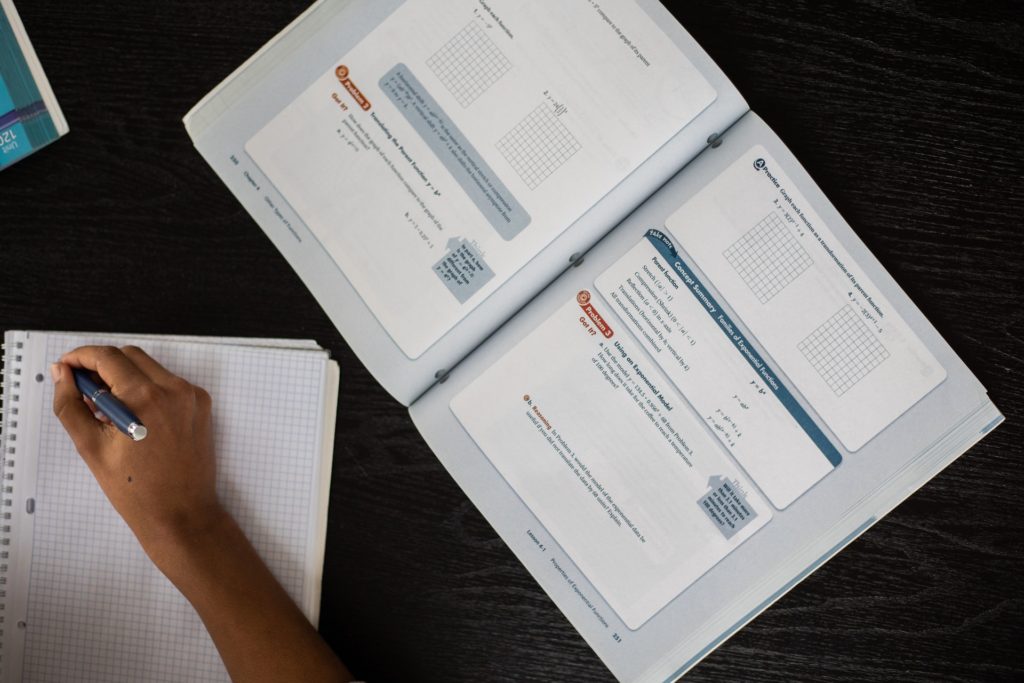Table of Contents
What is ICT in Education
Information and Communication Technology or ICT in education refers to various tools often connected to the internet that improve the communication of information in the classroom. While ICT in education is often thought of as a monolith, there are actually two distinct areas of ICT in education: ICT for class time activities and practical ICT.
Examples
Examples of ICT for Class Time Activities
Technology is embraced at least to some extent by the majority of teachers. Whether they play an occasional video in English or social studies class or have their students do an online simulation or experiment in science or math class, there are many ways that teachers can use technology to give students a closer and clearer look at what they are learning.
Other examples of ICT for class time activities could include audiobooks, games, and interactive apps or websites. These tools help to increase engagement and effectiveness of teaching by adding voices and perspectives to the classroom for low to no cost.
Examples of Practical ICT
Much less widely utilized, practical ICT tools can make teaching and lesson planning significantly easier. Examples such as shared documents, learning management systems, and class calendars are useful tools to ensure students always have the information they need at hand.
Many teachers worry that if their students do not have laptops provided by the school, that they can not implement practical ICT tools in their classroom, but it is important to remember that most of these apps and websites can be reached simply through a cell phone.
Benefits of ICT in Education
ICT Saves Paper
One of the most obvious and simple benefits of ICT technologies in the classroom is that it requires no paper. Activities, articles, worksheets, and more can always be found in a digital version.
ICT Keeps Sick Students In the Loop
Not only is this useful because it saves paper and is good for the environment, but it also means that students at home can always be on top of work from school without having to hope for a friend to bring it over or to get it from the teacher when they recover.
ICT Prevents Losing Things
On top of that, in a classroom that properly utilizes ICT in education, students can never again forget their work at home. Students can no longer claim that they couldn’t do their work because they forgot something somewhere or the classic “dog ate their homework”.
ICT Saves Time
Any teacher who thinks about how much time they spend in front of a copy machine will immediately understand the benefits of ICT over paper as a delivery format for educational materials. Instead of having to print, unjam the machine, print again, check the printer error, and then ask the receptionist to help, before trying the printer upstairs, teachers could simply give students a link to the article!
ICT technologies of all kinds can save teachers so much time not only by not having to print, but also not having to collect and organize turned-in work. Tools like Google Classroom make it easy to always have work organized and keep students up to date on what work is missed with the click of a button rather than individualized emails.
ICT Offers Useful Applications
ICT tools often work together quite well, increasing their efficiency and usefulness with each additional connected functionality. For example, Google Classroom is already a useful place for teachers to give students links and receive turned in homework, but it can also easily be tied to their calendars to send them reminders and late work notifications.
This puts the responsibility on students to organize their own work and time rather than it being the teacher’s job to give constant reminders. It also makes it easier to give students feedback through connections to shared documents and makes it faster to check papers for cheating with plagiarism checkers.
ICT Increases Transparency
ICT tools make it much easier to check students’ papers for plagiarism not only because of the automatic plagiarism checkers online, but teachers can also use document history to see how students crafted their work through time. Shared Document programs such as Google Docs have a function called “Document History” that shows exactly what changes were made to a document and when those changes were made.
Teachers can use this information to see if a paper was slowly crafted over time with mistakes being corrected as they go or if it’s a blank page until the due date and then suddenly a magically complete paper appears. Document History also shows if there are multiple collaborators on a single document so that if the student tries to get external help on an assignment, it will be obvious if they use multiple accounts to access the same document.
ICT Gives Insights
Document history isn’t just useful for catching cheaters, but also catching unhealthy habits as well. Sometimes the document history can show when a student is a serial procrastinator or that they’re writing at 2am instead of having healthy sleep habits.
Going over document histories with students one on one can be a useful practice to have students mindfully consider their habits. It can often be difficult to get the data needed to truly understand students and their motivations, but with ICT tools, teachers can get a better understanding of the way their students work.
ICT Removes Handwriting Obstacles
Another benefit of ICT tools is that they can remove the problem of needing to decypher students’ handwriting. While basic handwriting is certainly a useful skill, the vast majority of times, the main learning objective is far removed from handwriting and would be better served by students typing their documents. Not only is this a way that students often feel more at ease, but it makes the teacher’s job easier as well.
ICT Improves Digital Literacy
While using ICT tools may admittedly keep students from developing the best of handwriting, it does give them other digital literacy skills that are often far more important in today’s world. Knowing how to organize, file, and deal with professional documents and modify them to certain specifications is a much more often used skill than handwriting.
Students aren’t the only ones who can benefit from a bit of digital literacy. Teachers often feel themselves falling behind their students in their understanding of technology and ICT in education offers a way for teachers to keep their digital literacy skills sharp in a context that is familiar to them.
ICT Allows for Multiple Perspectives and Multisensory Learning
In the end however, the main benefit of ICT in education is that it allows for a much wider variety of ways for students to approach information. The internet allows students to see and interact with information from around the globe instantaneously through videos, simulations, and interactive games.
This is a huge advantage over students of bygone eras who could only read about events in foreign countries or hire professionals to come speak to their class for a portion of the day. Now classes can learn from multiple experts in class every day and use multisensory learning to explore information in a variety of mediums and contexts to teach their brain important patterns and rules associated with the concept they are studying.
Drawbacks of ICT in Education
Though ICT in education is largely a positive influence, any teacher who has implemented some ICT in class will know that there are definitely drawbacks as well. Though these drawbacks are significant and not likely to be dealt with in a satisfactory way, that does not mean that the drawbacks outweigh the benefits.
Handwriting is Superior for Memory
One of the first criticisms of students being too dependent on ICT in education is that writing by hand has been shown to be superior for retention of memories than typing. However, this simply means that students should take their notes and perhaps do worksheets on paper, but there are still many texts and instructional resources that students don’t need to write on and so can remain only digital without worry.
Increased Temptations to Be Off-Track
The main drawback to ICT in the classroom is that it often increases the number and excitement of distractions students could choose when they are bored in class. While bored students in past years surely found ways to distract themselves, be off track, and ignore their lectures, there are many tempting options when online that even the most diligent of students might be tempted to be briefly distracted by during class.
The important thing to consider here is that those distractions aren’t going anywhere. Even if teachers ban them from every classroom on the planet, those students are going to grow up and become adults who have to learn to manage their temptations to distraction. If teachers can help students to slowly learn to manage those temptations when they are young, they will be better equipped as adults to manage their behaviors.
Teachers often think of their jobs as information spewers, only tasked with vomiting knowledge at students and if they don’t learn, that’s on them. While students do have the ultimate responsibility for their work, teachers need to teach approaches to learning so that they can create independent learners who aren’t completely reliant on their teacher to get anything done.
Teachers often complain about helicopter parents being all over their students, but teachers who are always all over their students who are using their phone are also coddling their students. If the student is off track during class, they should not be shamed and called out as this will simply make them defensive.
As was mentioned, it is their responsibility to listen. If they don’t, they will simply not do well on assessments and not reach learning goals. Instead, teachers should have discussions with students about why they are off topic and if they’re interested in improving their approaches to learning.
If they are, then this provides a perfect opportunity for the student to buy into the means to control their phone use such as giving it to the teacher when they walk in the room, putting it on Do Not Disturb, or even turning it off. If they aren’t interested in changing their approaches to learning, then shoving things down their throat will not cause them to learn, but instead to shut down in anger.
The best option is somewhere in the middle, where students can use their phone in class for classroom activities and avoid temptations to go on things like social media. Students will inevitably get off track, but it is the act of getting on track after being distracted which builds that capacity. If teachers remove the temptation to be distracted entirely, they will not only create resistance from the students, but they will also remove the opportunity to practice diligence.
Conclusion
ICT in education is a largely positive progression in educational approaches, but it does introduce new difficulties for students and teachers to tackle as well. Classrooms that implement ICT will find classes run smoother, learning is deeper, and things are not lost or forgotten at home.
Though students may be distracted by some of the temptations online, this actually provides an opportunity for them to develop good working habits so that when they go on to work or further study and they don’t have a teacher or parent to coddle them, they will be resilient and able to keep their focus and get work done.
Want more like this? Make Lab to Class a part of your weekly professional development schedule by subscribing to updates below.



